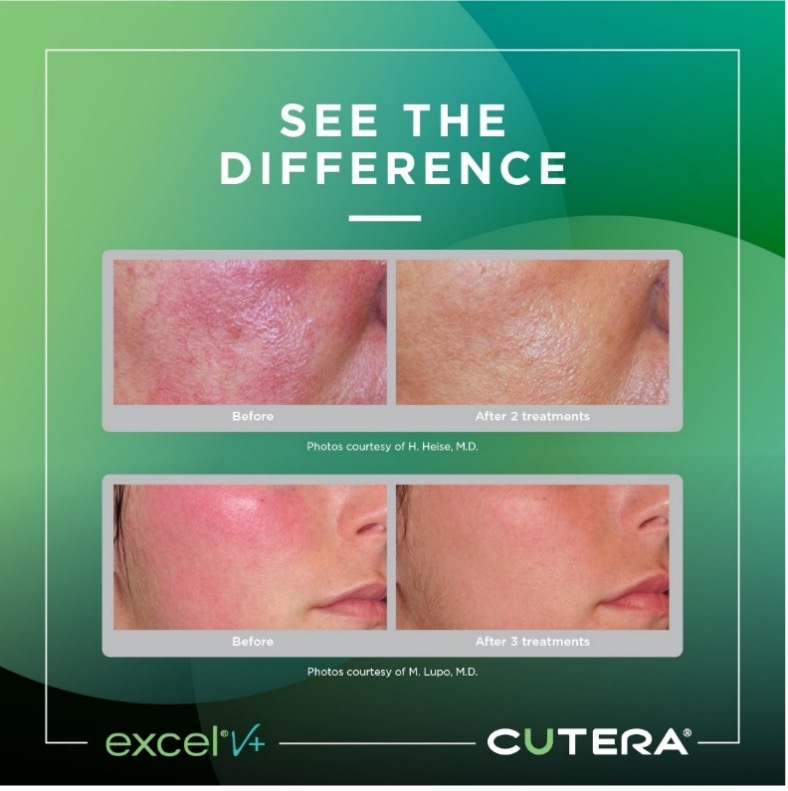Rosacea

Rosacea is a common chronic inflammatory skin condition characterized by persistent redness, enlarged and broken blood vessels, dryness, irritation, and pimple-like bumps on the face and sometimes other parts of the body such as the upper arms. There are different types of rosacea, and it is a lifelong condition without a permanent cure.
Rosacea most often affects women who have fair skin colour. Symptoms usually arise after age 30. The condition can affect children and adolescents, but it is not common. People are more likely to have rosacea if someone in their family has the condition. The appearance of rosacea can vary greatly from one person to another.
Treatment of rosacea varies for each person and focuses on relieving or reducing symptoms and preventing them from getting worse. Treatment options for rosacea could include:
• Medicines: There are several types of oral and topical medicines to treat bumps, pimples and redness caused by rosacea. Medicines help to manage symptoms and reduce the number of flare-ups.
• Laser treatment: The Excel®V+ Laser can help to remove visible blood vessels and limit the amount of redness on the skin associated with rosacea.
The Excel®V+ laser uses a high-power green laser in order to target blood vessels and pigment.
The Genesis V (532 nm & 1064 nm) handpiece delivers gentle micro-pulses of the 532 nm or 1064 nm wavelengths, for a non-ablative approach to addressing rosacea/diffuse redness, fine lines and wrinkles, and scars.
The Excel®V+ laser is the most cutting-edge technology for redness and rosacea treatment. It acts on the skin by releasing green light. This light is absorbed by the blood vessels which coagulate and then the body resorbs them. The Excel®V+ laser is effectively used to eliminate small red blood vessels, diffuse redness, and rosacea in 3 to 4 sessions. It also reduces flushing, which is typically caused by rosacea.
The advantage of Excel®V+ laser for redness and rosacea treatment in comparison with other existing procedures is significant since it selectively acts on blood vessels without damaging peripheral tissue. This laser is the most effective technique to treat redness and rosacea.
One of the advantages of the Excel®V+ laser is its ability to provide results with minimal downtime. While some patients might experience mild redness or swelling immediately after the treatment, (usually subsides in a day or two), allowing individuals to return to their regular activities quickly.
Rosacea’s appearance can vary greatly from one person to another. Most of the time, not all the potential signs appear. Rosacea always includes at least one of the primary signs, such as:
• Flushing: Facial redness that might come and go, is the earliest sign of the condition.
• Persistent redness: Persistent facial redness that might resemble a blush or sunburn that doesn’t go away.
• Bumps and pimples: Sometimes bumps might resemble acne, but rosacea does not cause blackheads.
• Visible blood vessels: Small blood vessels that look like thin, red lines might be visible on the skin.
In addition to signs of rosacea, symptoms of rosacea include eye irritation, burning or stinging (or a feeling of tightness of the skin), dry appearance, plaques (raised red patches that look like a rash), skin thickening (in some rare cases), and swelling.
Each person that has rosacea has triggers that cause their symptoms to flare. Possible triggers can include:
• Sun exposure.
• Hot or cold temperatures.
• Stress.
• Alcohol consumption.
• Spicy foods.
• Skin or hair products.
• Hormonal changes.
The cause of rosacea is unknown. Studies suggest rosacea could be a symptom of a condition that affects the blood vessels, immune, or nervous system, microscopic skin mites, an infection, or protein malfunction.
To diagnose rosacea, a medical provider will conduct a thorough exam of your signs and symptoms and will take a medical history. During your exam, you should tell your provider about any problems you’re having with your skin (redness, bumps or pimples, burning, itching, etc.). There’s no specific test to diagnose rosacea. Your provider might recommend you visit a dermatologist, who specializes in skin conditions.
